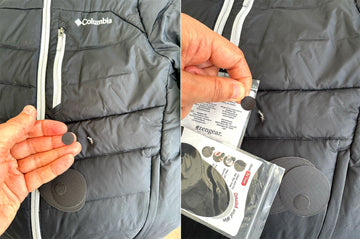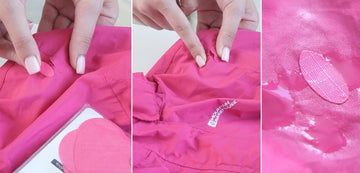What You Need to Know About Using Earplugs for Swimming
by Emily Jannet on May 10, 2023
If you are someone who enjoys swimming, you may be wondering about the use of earplugs for swimming. Whether you are a beginner or an experienced swimmer, it's important to be well-informed about the topic. In this article, we will discuss everything you need to know to make an informed decision about whether or not to use earplugs while swimming.
What Are Earplugs for Swimming?
Earplugs for swimming are specially designed to keep water out of your ears while swimming. They come in various shapes and sizes and are made from different materials, such as silicone, rubber, or foam. Some earplugs are reusable, while others are disposable.

Why Use Earplugs for Swimming?
Using earplugs for swimming has several benefits, including:
- Preventing water from entering your ears and causing infections
- Reducing the risk of swimmer's ear
- Preventing vertigo or dizziness caused by water entering your ears
- Keeping your ears warm in cold water.
What You Should Know About Using Earplugs for Swimming
Before you start using earplugs for swimming, there are a few things you should keep in mind:
- Make sure the earplugs fit properly to avoid discomfort or water leakage.
- Never share earplugs with others to avoid the spread of infections.
- Clean reusable earplugs after each use to avoid the buildup of bacteria.
- Don't use earplugs if you have a perforated eardrum or any other ear-related condition.
Types of Earplugs for Swimming
There are different types of earplugs for swimming available on the market, and choosing the right one for you can be overwhelming. Here are some of the most common types:
Foam Earplugs
Foam earplugs are made from soft foam material that molds to the shape of your ear canal. They are disposable and affordable, making them a popular choice among swimmers. However, they may not provide a tight seal and may fall out during swimming.
Silicone Earplugs
Silicone earplugs are reusable and made from a soft, flexible material that conforms to your ear canal's shape. They provide a better seal than foam earplugs and are less likely to fall out. However, they are a bit more expensive than foam earplugs.

Custom-Molded Earplugs
Custom-molded earplugs are made by taking an impression of your ear canal and creating a custom earplug based on the impression. They provide a perfect fit and seal and are the most effective in keeping water out. However, they are the most expensive and require a visit to an audiologist or ear care professional.
How to Use Earplugs for Swimming
Using earplugs for swimming is easy, and here are the steps to follow:
- Clean your ears with a soft towel to remove any dirt or debris.
- Roll the earplugs into a tight cylinder.
- Reach over your head with one hand and pull the top of your ear up and back with the other hand.
- Insert the earplug into your ear canal and gently push it in until it forms a tight seal.
- Repeat the process with the other ear.

FAQs about Using Earplugs for Swimming
- Q: Can I wear earplugs for swimming if I have ear infections?
A: No, you should not use earplugs for swimming if you have ear infections, perforated eardrums, or any other ear-related conditions.
- Q: Can earplugs get stuck in my ear?
A: While it is rare, earplugs can get stuck in your ear if you insert them too deeply or improperly. If this happens, do not try to remove the earplug yourself and seek medical help immediately.
- Q: How often should I replace my earplugs for swimming?
A: It depends on the type of earplug you are using. Foam earplugs should be replaced after each use, while silicone earplugs can last for several uses before needing to be replaced. Custom-molded earplugs can last for years but may need to be replaced if they no longer fit properly.
- Q: Can earplugs for swimming cause earwax buildup?
A: Yes, using earplugs for swimming can lead to earwax buildup. Make sure to clean your ears properly after using earplugs to avoid any buildup.
- Q: Can children use earplugs for swimming?
A: Yes, children can use earplugs for swimming, but it's important to choose the right size and type of earplug for their ears. Make sure to supervise them while they are using earplugs.
Conclusion
Using earplugs for swimming can help prevent water from entering your ears and causing infections, reduce the risk of swimmer's ear, prevent vertigo or dizziness caused by water entering your ears, and keep your ears warm in cold water. When choosing earplugs, make sure to consider the type and fit that is most comfortable for you. Remember to follow the proper steps when inserting earplugs, clean them after each use, and never share earplugs with others. If you experience any discomfort or problems while using earplugs for swimming, stop using them and consult with a healthcare professional.
Now that you know what you should know about using earplugs for swimming, you can make an informed decision about whether or not to use them. Enjoy swimming!





